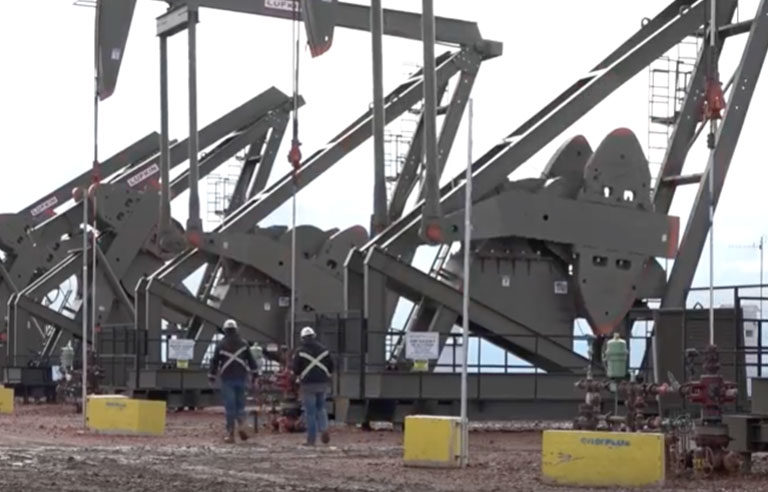New video for oil and gas workers: the hazards of manual gauging, sampling

Washington – NIOSH and the California Department of Public Health have collaborated on a video intended to protect oil and gas extraction workers from deadly hazards linked to manual gauging and fluid sampling on production tanks.
The video, released Aug. 2, states that at least nine deaths occurred between 2010 and 2014 because of a combination of insufficient oxygen and exposure to hydrocarbon gas when a thief hatch was opened on a storage tank.
When a thief hatch on the top of a tank is opened, an immense plume of hydrocarbon gas and vapor can escape, creating a toxic atmosphere that is oxygen deficient and highly explosive. Workers can experience issues with their eyes, lungs and central nervous system – immediately in some cases – and may develop abnormal heart rhythms, leading to dizziness, disorientation, loss of consciousness and possible sudden cardiac death. The video features footage taken with an infrared camera to make the plume visible.
Workers who manually gauge how much oil and water is in a tank, as well as oil haulers who collect samples before loading oil onto trucks, use thief hatches. Both types of workers often have long shifts in various kinds of weather, the video states, with many working at night and alone.
Among the video’s recommendations for workers:
- Inform designated personnel when starting and ending work.
- Remove anything that could spark or ignite flammable gas.
- Wear a properly tested and calibrated gas monitor along with other appropriate personal protective equipment.
- Ground yourself before getting on the catwalk by touching bare skin to a metal handrail.
- Open the main tank bleed-off valve, if one is available, and keep it open while working.
- Determine the wind direction with a windsock and stay upwind.
- Unless indicated by exposure assessments, use only self-contained breathing apparatus or supplied air respirators when around open thief hatches. Full-face, half-mask and powered air purifying respirators with organic vapor cartridges will not offer the proper protection.
Employers should:
- Evaluate exposure levels as part of a hazard assessment, and communicate information to onsite workers and offsite contractors.
- Post hazard signs at tank access points.
- Train workers on proper work practices and emergency response procedures.
“If you don’t know or are unsure of the hazards, stop the job and ask. Everyone has the right to stop work that is unsafe,” the video states. It adds that, in an ideal scenario, a worker never would have to open a thief hatch. Some employers have remote or automatic tank gauging systems that use a wireless device, and sampling ports or taps can be installed on existing tanks at the ground level.
Post a comment to this article
Safety+Health welcomes comments that promote respectful dialogue. Please stay on topic. Comments that contain personal attacks, profanity or abusive language – or those aggressively promoting products or services – will be removed. We reserve the right to determine which comments violate our comment policy. (Anonymous comments are welcome; merely skip the “name” field in the comment box. An email address is required but will not be included with your comment.)

